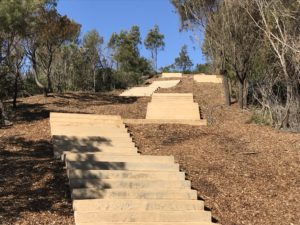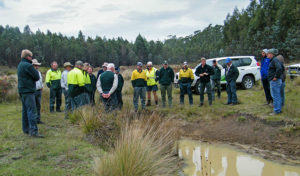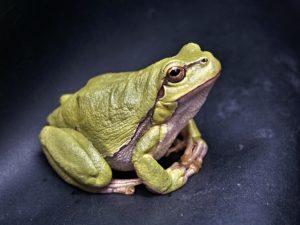
Central Coast Council approved a Master Plan for a permanent Walkway in March 2012 to provide a fully signposted concrete path which provides a safe route from Copacabana to Winney Bay, including a new north-facing and wheelchair accessible lookout at Captain Cook Lookout.
Concerned local Joy Cooper reached out to us recently concerning the concreting of the 5 Lands Walk in Winney Bay. She is not the only walker. Local residents are concerned about the damage done to ecological and cultural heritage of what was once a bushwalk track, now an 8 metre wide footpath that Joy Cooper describes as a ‘concreted coast’ that appeals more to tourists than walkers. As local walkers, bushwalking enthusiasts and trailblazers is there a line we draw when suggesting maintaining and improving tracks? We know it’s certainly something walkers can’t help wondering when seeing drastic changes on their favourite walk. Joy’s concerns below:
What a wonderful announcement from Adam Crouch with the huge sum of $4.6 million for his electorate, and for the Bulbararang cliff top walk.
What a shame the original plan for the walk had veered so far off the original plan. Having a bush-walk which makes it safer for walkers is wonderful and to link the two seaside village communities of Copacabana and Avoca Beach is superb. However to clear large areas of bushland to put in the walk way and concrete it, is a travesty and not needed, nor good practice.
If the current stairwell nearing completion is any indication residents will not be pleased. While residents were told in a community meeting the stairs were only 2 metres wide, the clearing of bushland has been more than 8 metres for more than 720 metres, and each week it is easy to see the clearing gets wider with more trees being damaged.

While machinery and fuel were to be kept in a compound on the old farm house site, sadly both were stored in bushland resulting in even more bush being cleared and damage occurring.
More than 60 trees were removed for this ‘nature walk’ for all to enjoy and remaining trees near the path were to have special protection to prevent any damage while construction was occurring, yet that did not happen and there have been numerous trees with damage and limbs torn off and thrown into the bush.
While the damage has occurred with the stairway to nowhere, despite numerous requests for it to stop before it was started, there was insistence by council for the stairs to be built, so the funding wasn’t lost. The cliff top ‘nature walk’ along Bulbararing is still to start. Residents should be concerned once again little or no information is made public until it is too late and the destruction has occurred.
While the original 2012 master-plan clearly shows the walk way through Winney Bay and along the Bulbarang cliff top is to be bush track and even shows images with no concrete to be seen, the current plans are nothing like that. The current plans are for a concrete pathway and vehicular access to market stalls, cantilevered cliff top platform for destination weddings along with a whale carcass shaped bridgeover a huge ravine which has very sorrowful memories for some in the community.

The original master plan mentions ‘existing areas of unique, intact native vegetation which high aesthetic appeal’ in Winney Bay and along the Bulbararing Headlands and there is mention of the need to keep the infrastructure ‘simple and discreet’. However the current plans in my opinion are nothing like that.
So, while we have a huge divergence from the original intention of the upgrade of the bush track and no consultation with the community, we also have the state government/Central Coast Regional Plan 2036/. With the second goal being to ‘Protect the natural environment and manage the use of agriculture and resource lands’. How we can do this and remove bushland by concreting vehicular access and concrete paths with large areas of batter doesn’t correlate for me.
Additionally, we have the recently adopted/ONE-Central Coast/adopted by Central Coast Council and the numerous mention of the need to protect our natural environment which is ‘cherished’. There is even mention of ‘expanding of the Costal Open Space System COSS’. Ironically, this Winney Bay area and Bulbararing cliff top are already part of COSS and there are numerous endangered ecological communities in the area.
What use are these documents if the powers that be can’t follow their own plans? What hope do we have of preserving bushland if it is degraded, neglected and then concreted? How can we connect to a place if it is all concreted?
Winney Bay and Bulbararing headland deserve the $4.6 million dollars which should be spent on employing trained people to rehabilitate the area and remove the bitou bush and harvest and grow local provenance vegetation, bringing back the natural beauty of the areaand providing the ‘bush track’ as originally intended. Not concrete creep and destruction.














